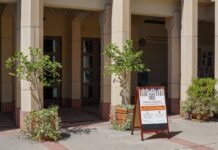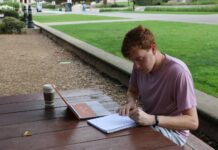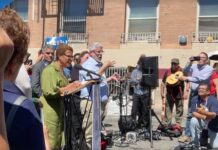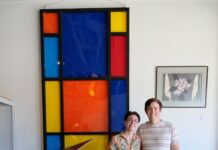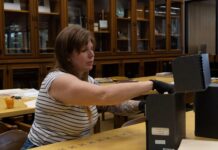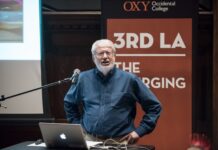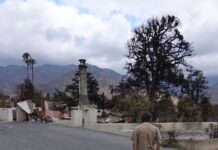Author: Demi Duenes
Students often assume the history they learn about through museums, textbooks or historians is an accurate and truthful narrative. Filmmaker Jesse Lerner challenges this assumption in his film, “Ruins: A Fake Documentary,” which he screened to a large crowd of students and professors in Choi auditorium March 5.
Before the film began, he primed the audience with a warning.
“Beware. Don’t believe anything you hear or see,” Lerner said.
The documentary opened with a scene of the Yucatan Peninsula in 1931, where an archaeologist is teaching a Mayan woman how to speak English. The words “fake documentary” materialized on the screen, informing the audience that what they were about to watch was a mix of deception and authenticity. As “Ruins” progresses, it exposes the Eurocentric creation of Mayan and pre-Columbian history and questions the process by which artifacts are found and the authorities we trust to construct history.
Lerner himself likened the film to a museum: a collection of different artifacts and clips. The film draws on home videos, newsreels, travelogues, cutout animations and hidden camera interviews. It is entirely in black and white and the voice-over narration crackles to further blur the lines between fabricated footage and archival footage.
Lerner decided to incorporate fake images and sounds after he could not find archival footage to support certain points he wanted to make.
One of the constructed segments features Maria Elena Pat, a fictional indigenous Mexican woman played by Chicano performance artist Maria Elena Gaitan. Aged with makeup, Gaitan’s character ridicules archaeologists Sylvanus Morley and Eric Thompson and their theories about Mesoamerican history, specifically how they misinterpreted Mayan culture and language by focusing on the Mayan elite and ignoring the common people.
“Ruins” played at the second of four events scheduled for the Spring 2015 Occidental Cinematheque series, which is sponsored by the Art History & Visual Arts department with support from the Remsen Bird Fund. All four events revolve around the theme of Remix Media: reworking film, songs and other art from different sources to create an entirely new work.
Some might call “Ruins” a mockumentary, but Lerner rejects this title and the implication that the film mocks its subjects. Lerner connects more to the label of “fake documentary”—a film about fake history, arguments, art and scholars. He explains that the inspiration to create the work came from one of the film’s characters, Brigido Lara. Lara is an infamous forger of pre-Columbian art whose work has fooled experts and been displayed in the world’s top-profile museums, including the New York’s Metropolitan Museum of Art during the 1960s and ’70s. As the final character featured in the film, Lerner uses Lara’s story as the ultimate challenge of the audience’s perception of authenticity.
“This process of fakery and deception led me to identify with Lara, and that’s how I came around to the ‘fake documentary,'” Lerner said.
Lerner hopes that from “Ruins,” students are able to reevaluate how they consume historical information and retain a sense of skepticism.
“This is not so much about the perception of ancient artifacts, many of which are beautiful and can be viewed as ‘art’ objects, as it is about the perception of history more generally. Who writes it, and whose political agenda does this reflect, and what are the other versions of these histories that are erased or forgotten when it’s written?” Lerner said.
This article has been archived, for more requests please contact us via the support system.
![]()


